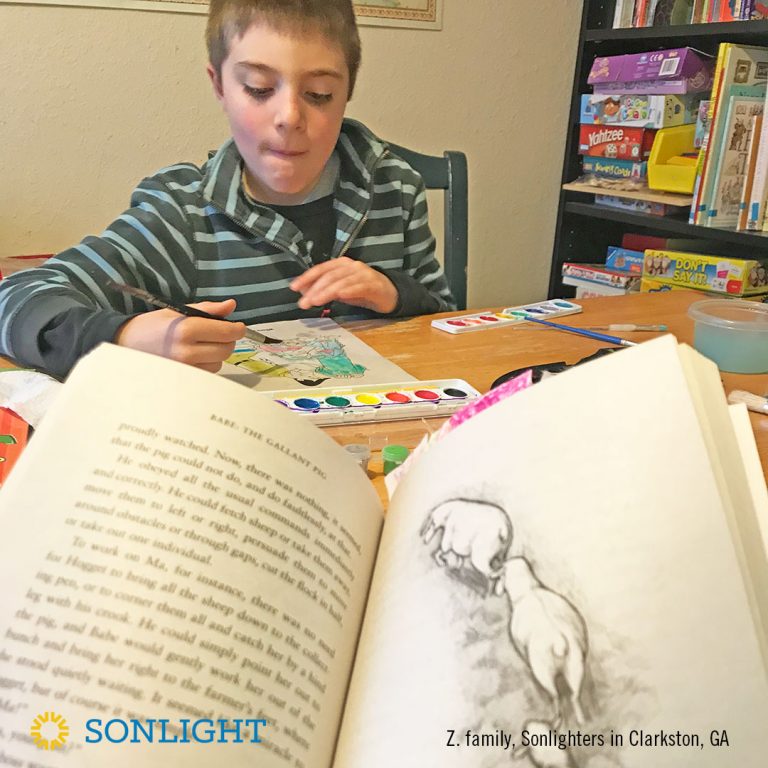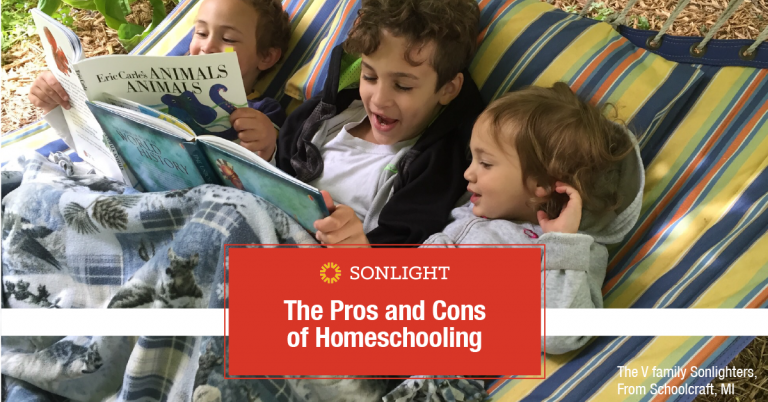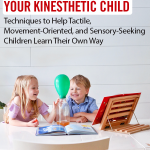
In a classroom setting, highly kinesthetic or sensory-seeking children are notoriously difficult to teach because they have a deep-rooted need to perform actions generally considered distracting for the rest of the classroom. Those actions involve moving and touching, and they don’t learn as well without this sensory stimulation.
Naturally, this situation can be hard for parents and teachers who just want their child to sit still and do the work. For these kids, though, sitting still actually makes it harder to pay attention. Limiting their movement hinders their ability to process what they are learning.
As homeschool parents, we are blessed with the opportunity to teach kinesthetic learners outside the limitations of the classroom, and apply unique techniques to help our kinesthetic learners become great students.
Kinesthetic learners can be broken down into three main categories.
1. Tactile Learners
Tactile learners need to touch and feel things as they learn. Feeling a flower as they learn about science would be more valuable to them than seeing a picture of a flower. Holding a baby bird would provide additional learning that a tactile student couldn’t get merely by looking at it.

2. Movement-Oriented Learners
Kinesthetic students need more than just touch to learn. They often need to be actually moving or feeling sensations to fully optimize their capabilities.
You’ll find them reading a book while hanging upside down from a sofa or skipping around during their spelling lesson. The thing you won’t find them doing very often is sitting still and being quiet.
Often kinesthetic learners also need an auditory aspect, and will therefore talk, sing, or hum to themselves, even when they are supposed to be listening to a book. They usually aren’t aware they are moving or humming until you bring it to their attention.
3. Sensory-Seeking Learners
And finally there are the sensory-seekers—children who crave input to their body. You’ll find these children love to jump, climb, spin, twirl, run into things, and dance their way through life. They love loud sounds (including their own voice), bright lights, and flashes. For a parent who isn’t sensory-seeking, the higher energy requirements and loudness can be a bit overwhelming.
Whether your child is tactile, movement-oriented, sensory-seeking, or a combination, the following methods will help you teach and help your child learn. All of these children fall under the kinesthetic umbrella and will benefit from a free homeschool environment that integrates motion into the learning.
How to Homeschool the Kinesthetic Learner
Children who need higher levels of sensory input or have a hard time sitting still will not do as well with traditional classroom methods because their bodies seek extra stimulation. Because I homeschool my two children who have ADHD (attention-deficit hyperactivity disorder) with SPD (sensory processing disorder), I have the freedom to let them move with almost every assignment. I incorporate the techniques below into our Sonlight curriculum, and they are easily able to concentrate and learn!
Kinesthetic learners learn best when doing projects or creating things. But the good news is, for most of these children, the activity they are doing doesn’t need to be directly related to what they are learning. They just need to be moving, feeling, or touching.

Here's a list of techniques that work well for kinesthetic learners in a homeschool setting.
- Add craft projects to whatever you're learning. Use Sonlight’s lapbooks, activity packages, and coloring book supplements.
- Don’t require your kinesthetic learner to sit still unless it’s absolutely necessary. Standing on one foot while doing math, sitting on an exercise ball while doing a reading assignment, and writing spelling words outside in sidewalk chalk help a child to learn far better than learning with minimal movement.
- Let them roam. Allow them to walk around while you read, hang upside down from the sofa while they read, dangle from the swing while they practice spelling, or run around the house between subjects a couple of times.
- Allow them to move, bounce, swing, twirl, or wiggle while you read to them.
- Have your child act out scenes while you read them or do dramatic play with LEGO bricks to keep their attention on what you are teaching.
- Let them use quiet toys and activities during read-alouds. Playdough, LEGO, squish balls, thinking putty, and crocheting can keep a tactile learner’s hands busy while they process information. Sanding wood; sorting buttons, socks, or screws; and drawing can be effective, too.
- Using music is helpful. If you’re learning about a particular country, try having them dance to ethnic music from that country. While doing math, addition songs may be more helpful than flash cards. Play music during quiet times.
- Allow them to touch and manipulate blocks during math, mini-figures during history, or letter tiles during language arts.
- Use breaks wisely. Some kinesthetic learners need frequent breaks to aid their learning. Breaks cause others to lose their attention and make their day longer. Those students might prefer working straight through with as few breaks as possible, and having more time for movement and play later on.
- Use alternate forms of print: number stamps and stickers in math, chalk, textured paper, or typing in writing.
- Serve as your child's scribe for longer writing assignments.
- Get outside. Swinging while listening to a read-aloud or bouncing on a trampoline while reciting Bible verses can help children learn more effectively.
- Use food. Chewing gum can help create a sense of movement. Cooking a meal from a culture or character in your studies can link learning to something tangible.
- Get outside. Take nature walks while you discuss books. Go to the park and do lessons while your child is sitting in a tree or swinging from a hammock. Those little motions will help move the information from short-term memory to long-term.
- Go places. Child-friendly museums often let children touch things they see. Other museums have displays which teach as children walk through.
- Add projects. Build a fort or construct a pyramid out of sugar cubes. Don’t be afraid to add art and crafts.
- Use art where you normally wouldn’t. Allow your child to draw in the margins of their math book, doodle on their science activity sheets, and build with their math blocks. Even the simple act of highlighting words on a page adds a little bit of the kinesthetic aspect and can help improve concentration.
- Use different textures and sensations. Writing on a dry erase board, on a chalkboard, or on the driveway adds a unique tactile experience. Using a vibrating pencil can help settle motor neurons in the hand that want to be moving instead of holding a pencil. Typing, especially with a keyboard setting that provides for tactile feedback, can also offer a bit of stimulation.
- Musical vibrations can help. One of my sons who needs tactile feedback loves strumming on his guitar, as it provides a nice sensation when he has to be sitting still. He also loves coming up with his own songs and lyrics to what he is learning. Both the sound and the sensation of playing aid his retention. Other musical instruments can also be used to provide sensory input. Songs already set to music can be used, especially if the child is allowed the freedom to act out the lyrics, dance to them, or just wiggle around.
- Use deep muscle stimulation in work. Allow your sensory-seeking child to do chores which involve lifting, carrying, climbing, and use of the large muscles in the arms and legs. Vacuuming using a heavy vacuum is often a great chore for this type of child, because it gives them the sensory input of a loud noise, combined with the deep muscle motion of pushing the vacuum around.
- Use muscle stimulation at rest. Weighted blankets and highly textured fabrics provide sensory input so your child doesn’t need seek it out as much. You can also have them try isotonic exercises while they do their schoolwork. These can stretching exercise bands, sitting on an exercise ball, playing with thinking putty, and even some light weightlifting.
The more I use these techniques that provide stimulation for both mind and body, the more I find myself at peace, too. When I see my children thriving with these methods, I'm able to let go of the anxiety their sensory-seeking produces in a sensory-avoider like myself. Because we flex our Sonlight curriculum with these techniques, we can all enjoy our studies together.
Considering homeschooling to provide more freedom for your kinesthetic child?










Thank you soooo much for this information!!!!